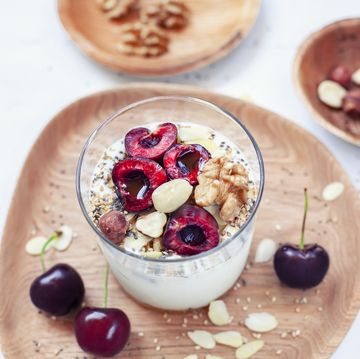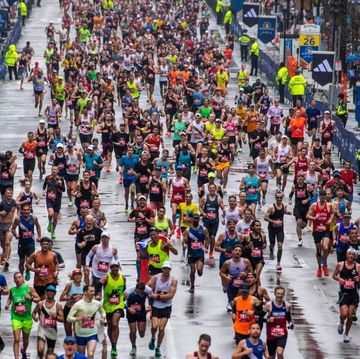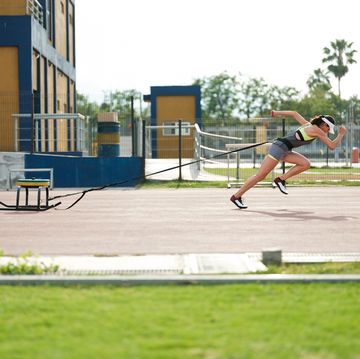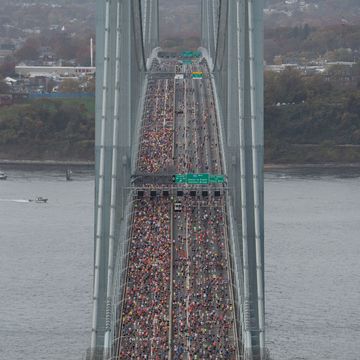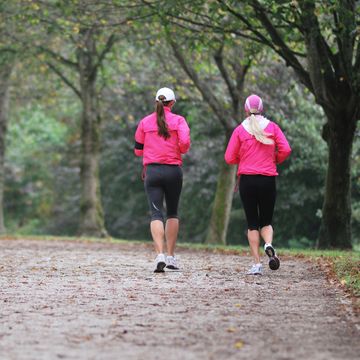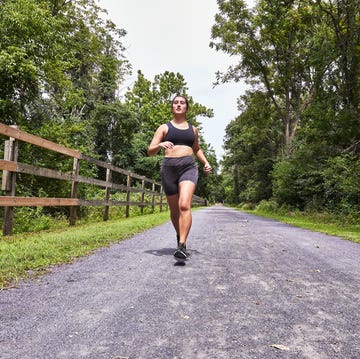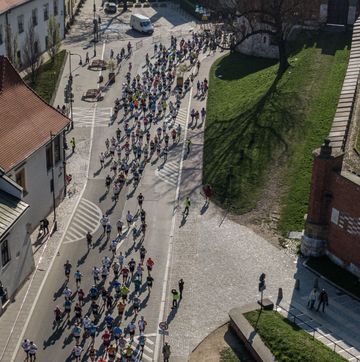It’s almost a year ago now, but the memory is fresh, try as he might to wipe it from his mind. As he walked off the track in the Olympic stadium last summer, his mind filled with questions he couldn’t answer, his Achilles tendon burning with an all-too familiar pain, Ciarán Ó Lionáird was spent. It wasn’t so much a physical exhaustion he felt — though his body had indeed long since cried surrender — as an emotional endgame, and not for the first time in his life, the 24-year-old was lost.
Stuff like this doesn’t make the highlights reel, but it is the cruel truth of the Olympic circus. The Games has its victors — those teary-eyed, anthem-singing champions whose story would soon be regurgitated around the world — but it also has its share of victims, the forgotten ones who throw everything they have at this and have it all, the whole damn thing, spat back in their face.
In front of 80,000 spectators, on a warm Friday evening in London, Ó Lionáird’s Olympic dream morphed into a living nightmare. As a clutch of athletes cruised across the line in the first round of the 1500 meters — many of the same athletes Ó Lionáird had raced and beaten just a year before — he languished halfway down the home straight in 13th place, finishing in a time so slow it doesn’t bear repeating.
As he limped his way through the mixed zone, he was stopped for an interview with Irish television and in front of the nation, vented with brutal, unsettling honesty his frustration with the sport, with his ailing body and its inability to endure the workload required to compete at this level. “I was spent, I had nothing left and I didn’t know where I was going to go,” he recalls now. “I felt like in all other aspects of life, if you try your hardest you should get the result. I invested so much and didn’t get the result, I felt like it wasn’t fair.”
It had been this way for months, the law of diminishing returns acting itself out on his Olympic preparation. The more he tried, the worse things got. He had been in pain since March. Every step, walking or running, and his Achilles tendon spoke to him. It screamed at him: stop, no more. He debated whether to listen, whether to forget this whole Olympic charade and just get himself healthy, but such an attitude wouldn’t be very, well, Olympian.
Ó Lionáird trained on as best he could, managed his Achilles like a difficult child that just wouldn’t stop crying, but every step was punctuated by that searing fire in his lower leg. There were days he would go to the track, run one pitiful repetition, and just walk away. He’d grab his gear, ignore his coach Mark Rowland, and leave. “I was disrespectful,” he realises now, “caught up on how shitty I was feeling. I didn’t know how to handle it. It began to consume me.”
He had duped himself into thinking he could still be competitive in London, enamoured by his performance in the World Championships the previous summer, where he finished 10th in the 1500m final off a haphazard preparation. Coach Rowland preached to him the value of experiencing an Olympics, learning what it’s all about, even if only as an education for the next one.
Standing in the bowels of the stadium on that Friday evening, though, it felt like the only thing he learned was that he wasn’t cut out for this. The one consoling aspect of reaching rock-bottom, though, is that the only way is up, and at least now he had the chance to chance to crawl out of the emotional and physical pit in which he found himself. When you’ve done it once, you know the fastest escape routes second time round. It hurt now, hurt deeply, but pain of this kind was nothing new. Ciarán Ó Lionáird had been here before.
To Hell and Back
It’s spring 2010, and Ó Lionáird is preparing to graduate from Florida State University (FSU). It’s just as well the academic side of his transatlantic move worked out because athletically, his career has spiralled relentlessly downwards. He left Ireland in the summer of 2006 as a promising junior. Under the low-mileage approach of Der O’Donovan at Leevale AC, Ó Lionáird racked up countless national titles and made his mark internationally in 2005 with a bronze medal at the European Youth Olympics and a 10th-place finish at the World Youths over 1500m.
The scholarship offers came in their droves, and the Cork athlete eventually signed for the University of Michigan, studying English literature and psychology. Before arriving, 30 miles would have been a decent week’s training load, but soon 80 or 90 became the norm. Displeased with the work ethic of some of his teammates, he began to train with elites based in Ann Arbor — world class athletes like Nick Willis and Nate Brannen. He didn’t realise it then, but he was much too young, too ambitious, and had far too many physical imbalances to cope alongside guys of that calibre.
Ó Lionáird overtrained, got injured, and never adopted the patient approach it would take to progress. He wanted it all, and he wanted it now. For the following three years, he didn’t go longer than a few weeks without injury. His life, even outside of running, became a bundle of stress. “My parents were going through a separation, there was lots of conflict,” he says. “I was often worried about things at home. Then I was overtraining and getting injured, had no consistency. I really enjoyed going to school in Michigan, but running was disastrous.”
Before his once-promising career became completely derailed, Ó Lionáird called a halt and changed track, transferring to Florida State University in 2009. The environment was better, he was certainly happier, but those dreaded injuries lingered. A badly herniated disc in his back soon had him staring down the barrel of retirement at just 22 years of age. He battled it as best he could, tried to rescue a track season, but soon he just surrendered. Enough was enough.
“I was close to packing it in,” he says. “My back was hurting from February. I tried to fight it until March, but then I said no, for the first time ever, I’m going to stop fighting, take a break and see if the motivation comes back. If it doesn’t, I may never run again. From March until June, I did nothing, zero. I went out a lot, did what a normal college student does, didn’t care what I ate.”
Throughout that time, he highlights two people who were especially supportive. The first is his mother Angela, who listened to her son’s troubles and constantly reassured him that things would come right. “My Mam was always very positive,” he says. “I always told her I’m not cut out for this running and she always told me ‘you are wired for this, since you were young this is what you wanted’. I always fought back and said ‘no, I don’t want to do this’, and she’d come back and say: ‘This isn’t you talking’. She always kept me in it.”
The second was the head coach at FSU, Bob Braman. As Ó Lionáird prepared to graduate, his back broken, the most unfit he’d ever been, Braman asked him to come back for another year, allowing the Irishman one last chance to rekindle the flame that was now barely clinging to life. Though his young protégé at that stage was like a beat-up old mule ready to be put out to pasture, he took a speculative punt on Ó Lionáird, able to see the thoroughbred ability that law dormant, if only it could be nurtured back to health.
That summer, Ó Lionáird stayed in Florida, trying to get himself healthy for the autumn season to repay Braman’s loyal investment. He lived a frugal life, sleeping on a mattress on a floor, spending his afternoons in the University gym, carrying out endless rehab exercises to fix his broken body. By August, he was back jogging. One day, he came upon an old elliptical machine in the corner of the FSU gym, on which he realised he could closely mimic running form without putting his back under undue stress. He never had much patience for cross training, but four times a week, he went all out on it for 30 minutes, blasting his body back into shape. When they saw him climb aboard, gym staff quickly learned to lay towels around the machine, such was the torrent of sweat that would soak the floor as he pushed himself to breaking point.
His weight came down, his fitness went up, and by September he was back in reasonable shape, finishing seventh man on the FSU team in their first cross country meeting. The next race, he was fifth, and by the time of pre-nationals in October, he was their top man. “It was off two months’ training, but it was the longest period I had where I was healthy,” he says. “It was the first time I stayed in my comfort zone in training, listened to my body, paying attention to what it needed, and it took me all the way to 18th in NCAA Nationals Cross Country.”
If he thought that breakthrough was good, the next eight months made it look ordinary. Ó Lionáird finally strung together a blissful period of healthy training, and enjoyed a standout season for FSU on the track, lowering his best time over 1500m to 3:40. He went back to Europe for the summer, had fun racing in Irish and Belgian meets, luxuriating in the feeling of finally, at long last, being fit and healthy. At the end of July, as he sunk a few beers to celebrate a good season, he got a text from his agent. One more race, a small 1500m in Oordegem in two days’ time. He could never have imagined it then, but that race was about to change everything.
The Game Changer
As he slowed to a stop, gazed at the clock, and sucked in some precious air, one of his Canadian competitors walked up to him. “Damn, man, you just changed your life.” Athletes are slaves to the the almighty number, and Ó Lionáird knew exactly the significance of 3:34.46 for 1500m. Olympic A-standard for starters, as well as annual funding from the Irish Sports Council. The time also punched his ticket to the World Championships in Daegu, for which he would have just weeks to prepare. All of a sudden, he was big time.
Four weeks later, he found himself in the world semi-final, sitting on the shoulder of Olympic champion Asbel Kiprop as they rounded the home turn, and it all just felt so… easy. “I was in the zone,” he says. “I almost cruised it in, not hurting, and I ran 3:36. I thought: ‘holy shit, how have I got to this point?’ I was a 3:40 guy a month ago.” In the final, his long season finally caught up with him, but it was a barometer of how far he had climbed that he was disappointed with 10th. Not to worry, though, as Ó Lionáird’s performances had not gone unnoticed in Daegu, and not just because of the retro mullet haircut he was sporting.
The Oregon Project
In Daegu, Ó Lionáird spoke to Alberto Salazar about the possibility of joining their highly successful group in Oregon, and days later he signed on the dotted line. The kid who grew up running around the deserted roads of Inchigeelagh, West Cork, was off to train with the world’s best distance runners like Mo Farah and Galen Rupp at Nike’s world headquarters in Portland, Oregon.
Ó Lionáird settled in well, training under Salazar’s assistant Steve Magness, and found the environment a lot more easy-going than outsiders perceived. “It was a misconception with the Oregon Project,” he says. “They take care of business; it’s dedication and it’s hard training, but it’s a very chilled out environment. Alberto is always up for a laugh and Mo is a very chilled out guy. Practice would always be light-hearted.”
Though the atmosphere was always light, the workload was nonetheless heavy, too heavy for the physically immature Ó Lionáird. “I got through the autumn of 2011 fine, but then at indoors, I just couldn’t shake the niggles. Any time I’ve ever tried to train super-hard, I’ve broken down. The other guys in the group had far more years of consistent running, and I had such an injury-prone background that the level of intensity those guys train at, I just wasn’t able to train.”
His injury demons came back to haunt him around the time Ó Lionáird defeated training partners Farah and Rupp over a mile at the New Balance Indoor Grand Prix in Boston. A particularly hard session set off some inflammation in his Achilles, and instead of admitting the extent of his issues, Ó Lionáird played them down. “I made a mistake. I hold my hands up. I was at fault, 100 percent, for that indoor season. I didn’t communicate with Alberto how serious it was.”
The week of world indoors, Ó Lionáird ran a tune-up 800m race, and as he stepped off the plane later that evening, realised his Achilles could be silenced no more. He flopped at World Indoors, then set about rescuing his Olympic season by managing the tendonitis that had become a chronic irritation. It didn’t respond to treatment, and as he looked at the level of his training partners, and where he was at, he remembered the decision he made as a Junior at the University of Michigan. If something’s not working, change track.
“There’s a lot of stories people have about why I left; people said it was too intense for me, but I was delighted in the environment,” he says. “I loved it. It was purely a case of injury. I didn’t know if I was ever going to be able to play catch-up to the point where I could train with those guys. I decided that, long-term, I needed a bridge between what I was doing at FSU and the professional level. I respect completely what they’re doing. Not for one second am I calling into question Alberto or Steve’s coaching ability, it was just at that point in my career, I wasn’t ready to handle that intensity.”
Ó Lionáird spoke with his agent Chris Layne, who suggested Mark Rowland’s group — the Nike Oregon Track Club, based 100 miles away in Eugene — would be a perfect fit. Rowland agreed to take Ó Lionáird on board with the proviso that their focus would be on Rio 2016, not London 2012, as he was unsure of what he could salvage just two months out from the Games.
Summer of Stress
Looking back, his memories of last summer are almost entirely negative. “It was really stressful,” he says of the Olympic build-up. “I had missed a tonne of training. The Achilles was in a state.” Though he had shown signs of progressive form — running a 3:57 mile in Dublin on the eve of the Games — he nonetheless felt smothered by the pressure of his race for fitness against an ever-ticking clock, a race he was never going to win. “I enjoyed very little of the Games,” he says. “Don’t even remember a lot of it. I’ve pushed it from my memory. The race itself was a blur.”
Though in the immediate aftermath he was at crisis point, Ó Lionáird soon took a more measured approach to his situation. Initially, he wanted to get the hell out of London, but he soon re-considered. “I decided if I was going to stay, I was going to start, right there and then, on fixing the Achilles, instead of just going out all the time.” With the help of the Irish medical team, specifically Gerard Hartmann and Emma Gallivan, he began the healing process the very next day.
Meanwhile, he dealt with the fallout of his meltdown interview in a very Irish way; he laughed at it. He didn’t have much choice, as roommates Barry Murphy, Scott Flanagan and Scott Evans made a habit of playing it full-blast on YouTube whenever he was around. When his Olympic teammates left London, bound for a public reception in the heart of Dublin, he took flight back to Florida to get away from it all and think things through. He told Coach Rowland he needed a break, that he would report back to Eugene whenever he felt the fire again. For five weeks, he cast London from his mind, went to countless electro music shows with friends, people who didn’t know or care what a 1500m race was. Every morning and evening, though, he did a couple of hundred eccentric drops for his Achilles, aware that if he was to come back, he wanted so very badly not to experience the same misery again. By Mid-October, he was back in Eugene, training properly — the fire in his Achilles replaced with one in his heart.
New Approach
New Year’s Day, 2013, and as the world wakes up to a hangover, Ciarán Ó Lionáird is waking up to a cold, empty track — save for his coach Mark Rowland — and a session of 20 by 400 meters, which will be run in a nauseating 60 seconds. “I do very little,” he says of his routine these days. “When I’m in Eugene, I live a more dedicated lifestyle than I ever have. People call me the recluse because I’ll stay in the house on my own, but I don’t like being in busy places because I don’t like getting sick. I love having a beer with dinner, but I’m very rarely on the lash.”
It can be a tedious routine, which is why he breaks up long training blocks in Eugene with spells in Florida visiting his girlfriend and friends. It is a system which allows him to maintain a balance in a life which can sometimes feel consumed by the quest for athletic success. The difference now, though, is that he has learned to develop an emotional detachment from his sport, a maturity moulded through experience. “The Olympics changed my approach,” he says. “I’d all my emotional energy burned up before I got to London. I came back with a controlled approach. It’s an up and down sport; you can’t be too high on the good days and low on the bad days. You have to just tick boxes and move on; do the work but not involve yourself emotionally to it.”
The new approach to training, coupled with the successful relationship he has built with Mark Rowland, who he describes as an “amazing coach”, saw Ó Lionáird bounce back to form in a major way this indoor season. He ran a 3:52 mile at the Millrose Games, won a European Indoor bronze medal over 3,000m, but for him, such achievements were only the first of many ascents on his journey back. “I was pissed with the bronze medal in Gothenburg,” he says. “I got beaten by two people, and that’s the way I approach every race now. I want to beat people.”
You may wonder where his story goes now. Truth is, there is no happy ending here, not just yet anyway. If you’re looking for one, you’ll need to visit the fiction section, because real life at the elite level of track is all too often riddled with pain, failure, setbacks, and just the occasional smattering of breakthroughs and glory. It’s the arrival of the latter that keeps him in it, the thought that the summit of all this toil is just over the brow of the next hill; the brick walls he has to surmount and occasionally run through on the way there are nothing but a necessary work hazard.
Too often, though, the thrill that accompanies a great workout recently has been swiftly tempered by the anxiety that it could be his last for a while, that his back will soon seize up or his Achilles will start whining again. It happened again just a few weeks ago. Ó Lionáird blitzed 15 times 400m, averaging 58 seconds, a workout which his left quad took a disliking to and left him unable to run for a number of days afterwards.
The injuries that have plagued him in recent years are simply the residual by-product of deep-rooted imbalances that will take a mammoth effort to correct. That doesn’t mean he’s not going to try. It’s why, right now, Ó Lionáird finds himself back in Ireland, making daily visits to the man whose reputation for fixing the unfixable is world-renowned. Gerard Hartmann’s clinic in Limerick is more than a place elite athletes go to get healthy; it’s a shrine to athletic greatness. As you enter, you pass through a room where countless world record holders and Olympic champions have left their signed photos, medals, spikes, singlets, all of them thanking Hartmann for his part in their success, for rescuing them and their bodies when they were on the verge of accepting defeat.
“I’m putting in four to five hours a day of rehab work,” says Ó Lionáird. “It’s tedious stuff. Doing four hours of rehab, it’s like doing eight hours of running.” Though it’s intensive, exhausting, and downright unenjoyable, he knows this is what has to be done, right now, if he is ever to realise his vast potential. Hartmann and Ó Lionáird have decided to go to the core of all his issues, you see, try to rebuild him from the inside out. “I need to be able to train at the intensity to be able to compete at a World level instead of just European level,” he says. “I’ve been training all along while rehabbing to keep myself at the point where it wouldn’t take me that long to get back, but it does take a lot out of you. I’m not ruling Moscow [World Championships] out, but I’m not going to show up unless I’m firing on all cylinders at 100 percent.”
“Consistency is the key. It’s what I had in 2011, and I want it for three years up to 2016, and that’s going to require a bit of groundwork on the front end, even if people see it as a disaster in the short run. This is the best way for me to get to Rio at 100 percent, and I’m willing to make sacrifices in the short term to make that happen. I want to look back on my career and have gotten the very most out of my body and I only have a certain time frame to do it. Once I get out there stronger, and ready to perform to my best, I’ll be able to show the people who invested in me that I’m worth the investment.”
Right now, thoughts of the European circuit, World Championships and Olympic Games may feel a long way away, but every time he walks into Hartmann’s clinic in Limerick he is surrounded by the stories of those who walked before him, of equally challenging, sometimes even hopeless situations, that came good in the end. It’s that thought that keeps him going. Once more onto the breach.
In the aftermath of London, during his time out in Florida, Ó Lionáird allowed his mind to clear. Without the raw emotions spinning his head into a daze, he came to a decision about the direction his next few years would take. Now that he’s off on that journey, he’s all in, come what may. “I resolved what I wanted to do, then I put it to the back of my head,” he says. “I want to go to Rio and make up for what happened in London. I want redemption.”
Typical Training Week
Monday: AM: 30mins run + 2hrs strength and conditioning (form drills, flexibility, dynamic movement); PM: 40mins run
Tuesday AM: Session: 3x2k in 5:20, paces alternating each lap; PM: 20mins run
Wednesday: Same as Monday
Thursday: AM: Pace run: 8-mile tempo at LT Heart Rate; PM: 20mins run
Friday: Medium long run (10 miles)
Saturday: Rest (Gym session — drills, flexibility, dynamic stretching, muscle activation)
Sunday: 90min long run steady or hill reps
Ó Lionáird on:
Doping
I’m clean and I want to try and achieve the best I can be, the most I can, without drugs. All I can do is control that, and all I can hope is that athletes who are cheating are caught and the testing will work. I do feel like the sport is cleaner these days, the 1500m especially. I’d like to see other countries implement testing as strictly as Ireland does. It comes and goes, but I get tested usually once every couple of weeks, and I feel that’s far more than other countries are doing. I’d love to see the African countries up their game with testing, and re-testing the samples from previous championships is obviously important as it exposes systems and programmes that were in place and may still be in place for doping.
Advice to Young Athletes
Consistent training, year-round, with the only breaks being by choice, is the biggest factor in improving your performance. It’s better than any single session. Doing the things that will allow you to train year-round consistently is more important than training hard, things like looking at biomechanics, fixing that stuff, making sure you have good recovery, good diet, taking care of your body. That can’t start young enough. You mightn’t see the immediate payoffs from that. Someone training hard might beat you in the short-term, but you’ll be in a really good place in the long-term if you try and shoot for consistency.
This story origanally appeared in Irish Runner Magazine, April/May 2013. To contact Irish Runner, email: editor@irishrunner.ie

Cathal Dennehy is a freelance writer based in Dublin, Ireland, who covers the sport for multiple outlets from Irish newspapers to international track websites. As an athlete, he was Irish junior cross-country champion and twice raced the European Cross Country, but since injury forced his retirement his best athletic feat has been the Irish beer mile record. He’s happiest when he’s running or writing stories about world-class athletes.



